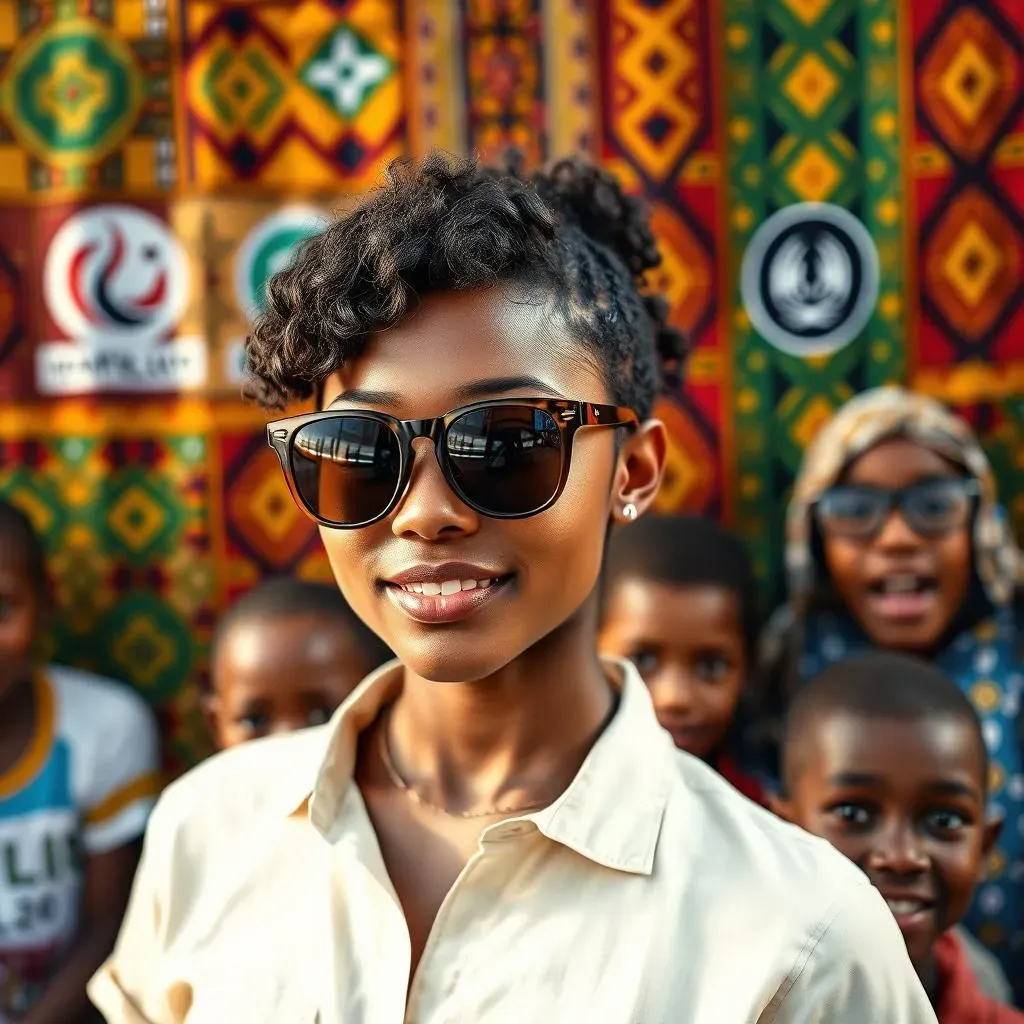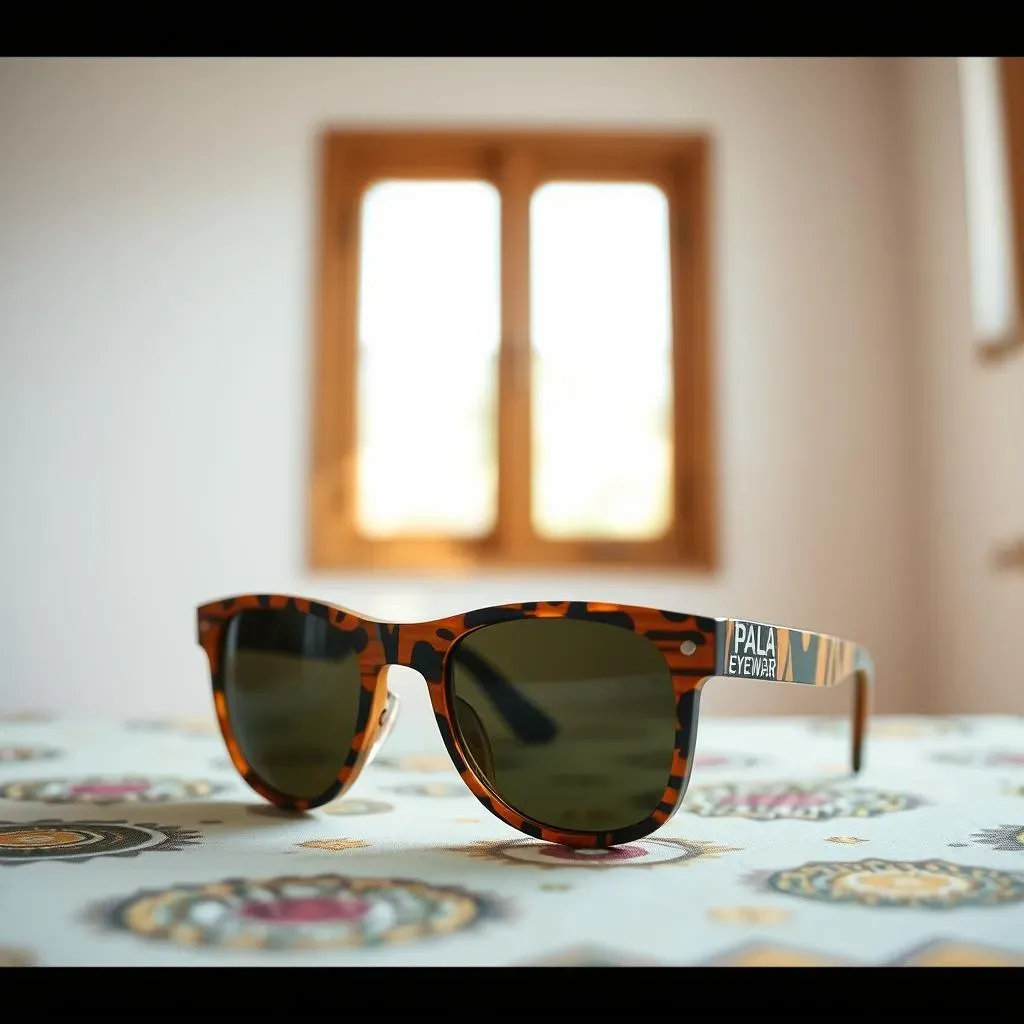Table of Contents
As consumers become increasingly aware of the social and environmental impact of their purchasing decisions, the demand for products that combine style with sustainability has grown. This is particularly evident in the eyewear industry, where sunglasses with a social impact are gaining popularity. These eco-friendly shades not only protect our eyes from the sun but also contribute to a greater good. From supporting vision care in developing countries to reducing plastic waste, sunglasses with a social impact are redefining the way we think about fashion and philanthropy. In this article, we'll delve into the world of socially responsible sunglasses, exploring the benefits, top brands, and innovative trends that are shaping the future of sustainable eyewear. Whether you're a conscious consumer or simply a sunglasses enthusiast, join us as we examine the power of sunglasses with a social impact to make a difference.
What are Sunglasses with a Social Impact?
What are Sunglasses with a Social Impact?
Introduction to Socially Responsible Eyewear
Sunglasses with a social impact are more than just a fashionable accessory; they represent a growing movement towards sustainability and social responsibility in the eyewear industry. These sunglasses are designed not only to protect our eyes from the sun but also to contribute positively to society and the environment. From eco-friendly materials to charitable initiatives, sunglasses with a social impact are redefining the way we think about fashion and philanthropy.
At the heart of this movement are brands that prioritize sustainability, using recycled materials, bioplastics, and minimizing waste in their production processes. Some companies also partner with charities, donating a portion of their sales to support vision care in developing countries or environmental causes. This blend of style, sustainability, and social consciousness appeals to the increasing number of consumers who want their purchases to align with their values.
Brand | Materials Used | Charitable Cause |
|---|---|---|
Pala Eyewear | Recycled plastic waste, bioplastics | Supports eye-care programs in Africa |
Warby Parker | Eco-friendly acetate, recycled materials | Donates to non-profits providing vision care |
Key Features of Sunglasses with a Social Impact
So, what makes sunglasses truly have a social impact? Several key features distinguish these eyewear products from conventional sunglasses. Firstly, they are made from sustainable materials, such as recycled plastics, bamboo, or bioplastics. This reduces the amount of waste and the reliance on virgin materials, contributing to a more circular economy.
Secondly, many of these brands partner with charities or NGOs, donating a percentage of their profits to support social causes. This can include providing vision care to underserved communities, promoting environmental conservation, or supporting education and empowerment programs.
- Eco-friendly materials: recycled plastic, bamboo, bioplastics
- Charitable partnerships: donations to vision care, environmental, and social causes
- Sustainable production: minimal waste, energy-efficient manufacturing
- Transparent supply chain: ensuring fair labor practices and ethical sourcing
The Benefits of EcoFriendly Sunglasses with a Social Impact
The Benefits of EcoFriendly Sunglasses with a Social Impact
Environmental Benefits
The production and disposal of traditional sunglasses contribute to environmental pollution. Eco-friendly sunglasses with a social impact, on the other hand, are made from sustainable materials such as recycled plastics, bioplastics, and bamboo. This shift towards renewable resources reduces the amount of waste in landfills and oceans, decreasing the carbon footprint of the eyewear industry.
Moreover, these brands often adopt environmentally conscious manufacturing processes, minimizing energy consumption and waste generation. Some companies even implement take-back programs, allowing customers to return their old sunglasses for recycling, further reducing electronic waste.
Material | Benefits | Examples |
|---|---|---|
Recycled Plastic | Reduces plastic waste, conserves natural resources | Pala Eyewear, Warby Parker |
Bioplastics | Biodegradable, non-toxic, and renewable | Some innovative startups |
Bamboo | Sustainable, lightweight, and durable | Eco-friendly brands like Ukon |
Social Benefits
Beyond their environmental advantages, sunglasses with a social impact also have a profound social influence. Many brands partner with charities to support vision care in developing countries. For every pair sold, a portion of the profit is donated to fund eye exams, glasses, and even cataract surgeries for those in need.
This not only improves the lives of individuals but also contributes to the economic development of communities. Clear vision can enhance educational outcomes, increase productivity, and reduce poverty. Some brands also focus on environmental causes, such as ocean cleanup or reforestation, further broadening their positive impact.
- Supporting vision care in Africa with Pala Eyewear
- Funding non-profits for vision care with Warby Parker
- Environmental initiatives, like beach cleanups
How Sunglasses with a Social Impact Support Vision Care in Developing Countries
How Sunglasses with a Social Impact Support Vision Care in Developing Countries
Introduction to Vision Care Support
One of the most significant ways sunglasses with a social impact make a difference is by supporting vision care in developing countries. Many brands partner with charities and non-profit organizations to provide eye care services to underserved communities. For every pair of sunglasses sold, a portion of the proceeds is donated to fund eye exams, prescription glasses, and even cataract surgeries.
This initiative not only improves the vision and quality of life for individuals but also contributes to the economic development of communities. Clear vision can enhance educational outcomes, increase productivity, and reduce poverty. Brands like Pala Eyewear and Warby Parker are leading examples of companies that have made significant contributions to vision care in Africa and other parts of the world.
Brand | Charitable Partner | Impact |
|---|---|---|
Pala Eyewear | Vision Aid Overseas | Provides eye exams and glasses to children in Africa |
Warby Parker | Non-profit organizations | Funds eye exams and glasses for those in need |
On-Ground Impact and Future Initiatives
The impact of these donations is tangible. In many developing countries, access to eye care is limited, and corrective eyewear is a luxury. By providing these services, sunglasses with a social impact brands are helping to break the cycle of poverty. Children can attend school and learn effectively, adults can work and support their families, and communities can thrive.
Looking to the future, these brands are not only continuing their charitable work but also exploring new ways to increase their impact. Some are investing in sustainable practices that reduce waste and minimize their carbon footprint, while others are launching new products made from recycled materials.
- Expanding charitable programs to reach more communities
- Increasing the use of recycled materials in production
- Partnering with local organizations to create sustainable jobs
Top Brands Offering Sunglasses with a Social Impact
Top Brands Offering Sunglasses with a Social Impact
Leading Brands in Socially Responsible Eyewear
Several brands are pioneering the movement towards socially responsible sunglasses. Pala Eyewear and Warby Parker are two notable examples. Pala Eyewear creates stylish, eco-friendly sunglasses using recycled plastic waste and bioplastics, while supporting eye-care programs in Africa. Warby Parker, on the other hand, is known for its "buy one, give one" model, donating a pair of glasses to someone in need for every pair sold.
These brands, along with others like Ukon and Coral Eyewear, are setting a new standard for the eyewear industry. They combine high-quality, fashionable products with a commitment to sustainability and social responsibility, appealing to consumers who value both style and substance.
Brand | Materials Used | Charitable Cause |
|---|---|---|
Pala Eyewear | Recycled plastic waste, bioplastics | Supports eye-care programs in Africa |
Warby Parker | Eco-friendly acetate, recycled materials | Donates to non-profits providing vision care |
Ukon | Bamboo, recycled plastics | Supports reforestation and wildlife conservation |
- Pala Eyewear: Eco-friendly sunglasses with a focus on African eye-care
- Warby Parker: Affordable, fashionable eyewear with a charitable mission
- Ukon: Sustainable sunglasses made from bamboo and recycled plastics
Innovative Brands Making a Difference
Beyond these well-known brands, there are several innovative startups pushing the boundaries of sustainable eyewear. For example, some companies are experimenting with bioplastics, while others are using 3D printing to reduce waste and create customized frames.
Moreover, brands like Coral Eyewear are expanding their social impact by partnering with local organizations to promote sustainability and support community development. As the demand for sunglasses with a social impact grows, it's likely we'll see even more creative and impactful initiatives emerge.
Brand | Innovative Materials | Social Impact Initiatives |
|---|---|---|
Coral Eyewear | Recycled PET bottles, bioplastics | Partners with local NGOs for community development |
3D Printed Sunglasses | Customized frames from recycled plastics | Reduces waste and supports sustainable manufacturing |
- Coral Eyewear: Partners with NGOs for community development
- 3D Printed Sunglasses: Custom frames from recycled plastics
- Bioplastic Sunglasses: Sustainable and biodegradable
The Future of Sunglasses with a Social Impact: Trends and Innovations
The Future of Sunglasses with a Social Impact: Trends and Innovations
Emerging Technologies and Materials
As the demand for sunglasses with a social impact continues to grow, innovators are exploring new technologies and materials to further reduce the environmental footprint of eyewear. One of the most significant trends is the use of bioplastics, which are biodegradable and made from renewable resources such as corn starch or sugarcane. Brands are also experimenting with 3D printing, allowing for customized frames while minimizing waste.
Moreover, advancements in recycling technologies are enabling companies to create sunglasses from 100% recycled plastic waste. This not only reduces the amount of plastic in landfills and oceans but also decreases the need for virgin materials. For example, Pala Eyewear has launched a line of sunglasses made entirely from recycled plastic chips, demonstrating the potential for a closed-loop production system.
Material | Benefits | Examples |
|---|---|---|
Bioplastics | Biodegradable, non-toxic, renewable | Innovative startups |
Recycled Plastic | Reduces plastic waste, conserves natural resources | Pala Eyewear |
3D Printing | Customized frames, minimizes waste | Startups and innovative brands |
- Increased use of bioplastics for frames
- 3D printing for customized, waste-reducing production
- Advancements in recycling technologies for 100% recycled frames
Sustainable Business Models and Consumer Engagement
The future of sunglasses with a social impact also lies in sustainable business models that engage consumers in the mission. Brands are adopting circular economy principles, such as take-back programs for old sunglasses, which are then recycled into new products. This approach not only reduces waste but also fosters a sense of community among customers who feel they are part of something meaningful.
Furthermore, companies are leveraging social media and storytelling to raise awareness about social and environmental issues. By sharing the impact of their charitable initiatives and the stories of people who have benefited from their donations, these brands inspire loyalty and encourage consumers to make a positive difference through their purchasing decisions.
Brand | Sustainable Practice | Consumer Engagement |
|---|---|---|
Pala Eyewear | Take-back recycling program | Community engagement through social media |
Warby Parker | "Buy one, give one" model | Storytelling of charitable impact |
Ukon | Partnerships with eco-influencers | Educational content on sustainability |
- Implementing take-back programs for recycling
- Storytelling and transparency about charitable impact
- Collaborations with influencers and educators for awareness
Conclusion: Seeing the World with a Clearer Conscience
In conclusion, sunglasses with a social impact are more than just a fashion statement - they represent a movement towards a more sustainable and equitable world. By choosing eco-friendly frames, supporting vision care in developing countries, and promoting environmentally responsible practices, we can make a tangible difference with our purchasing decisions. As the demand for socially responsible eyewear continues to grow, it's exciting to think about the innovative trends and collaborations that will emerge in the future. Whether you're drawn to the stylish designs or the altruistic missions, sunglasses with a social impact offer a unique opportunity to wear your values on your face. So next time you're in the market for a new pair of shades, consider joining the movement towards a clearer conscience, one pair of sunglasses with a social impact at a time.
